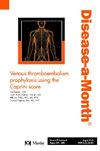Atypical Alzheimer's dementia: Addressing the subtypes, epidemiology, atypical presentations, diagnostic biomarkers, and treatment updates
IF 4.3
3区 医学
Q1 MEDICINE, GENERAL & INTERNAL
引用次数: 0
Abstract
Alzheimer's disease is a progressive neurodegenerative disorder that primarily affects the elderly population; and is characterized by the gradual loss of memory, cognition, and ability to carry out daily activities. However, a growing body of research indicates that there exists a subtype of Alzheimer's disease known as Atypical Alzheimer's disease. Atypical Alzheimer's disease is a rare form of dementia that differs from the typical presentation of Alzheimer's disease, such as variations in the age of onset, distribution of brain pathology, and clinical symptoms. The patients affected have a younger age of onset and have predominantly visual, language, executive function, motor, and behavioral dysfunction. The diagnosis requires a comprehensive neurological evaluation with specific attention to cognitive and behavioral changes while ruling out other potential causes of dementia. Emerging biomarkers including CSF profiles, amyloid and tau PET imaging, and advanced neuroimaging techniques offer promising avenues for improving diagnostic accuracy and understanding disease mechanisms. In this article, we focus on atypical presentations seen in the posterior cortical variant, frontal variant, progressive aphasic variant, corticobasal syndrome and look at the specific biomarkers used in the diagnosis of each variant along with focusing on the treatment of the disease. We also aim to provide an understanding of Atypical Alzheimer's disease, its clinical features, the biomarkers helping in diagnosing the disease, the current treatment guidelines, and the current scientific advancements in the field.
非典型阿尔茨海默氏痴呆:解决亚型,流行病学,非典型表现,诊断生物标志物和治疗更新。
阿尔茨海默病是一种主要影响老年人的进行性神经退行性疾病;其特征是逐渐丧失记忆、认知和日常活动能力。然而,越来越多的研究表明,阿尔茨海默病存在一种亚型,即非典型阿尔茨海默病。非典型阿尔茨海默病是一种罕见的痴呆症,不同于阿尔茨海默病的典型表现,如发病年龄、脑病理分布和临床症状的变化。患者发病年龄较轻,主要表现为视觉、语言、执行功能、运动和行为功能障碍。诊断需要全面的神经学评估,特别关注认知和行为变化,同时排除其他潜在的痴呆原因。新兴的生物标志物,包括脑脊液谱、淀粉样蛋白和tau PET成像,以及先进的神经成像技术,为提高诊断准确性和理解疾病机制提供了有希望的途径。在这篇文章中,我们关注后皮层变异、额叶变异、进行性失语症变异、皮质基底综合征的非典型表现,并关注用于诊断每种变异的特定生物标志物,同时关注疾病的治疗。我们还旨在提供对非典型阿尔茨海默病的理解,其临床特征,帮助诊断该疾病的生物标志物,当前的治疗指南,以及该领域当前的科学进展。
本文章由计算机程序翻译,如有差异,请以英文原文为准。
求助全文
约1分钟内获得全文
求助全文
来源期刊

Dm Disease-A-Month
医学-医学:内科
CiteScore
5.70
自引率
2.50%
发文量
140
审稿时长
>12 weeks
期刊介绍:
Designed for primary care physicians, each issue of Disease-a-Month presents an in-depth review of a single topic. In this way, the publication can cover all aspects of the topic - pathophysiology, clinical features of the disease or condition, diagnostic techniques, therapeutic approaches, and prognosis.
 求助内容:
求助内容: 应助结果提醒方式:
应助结果提醒方式:


